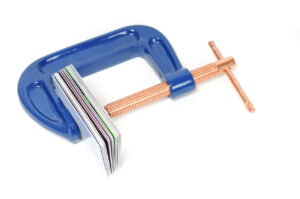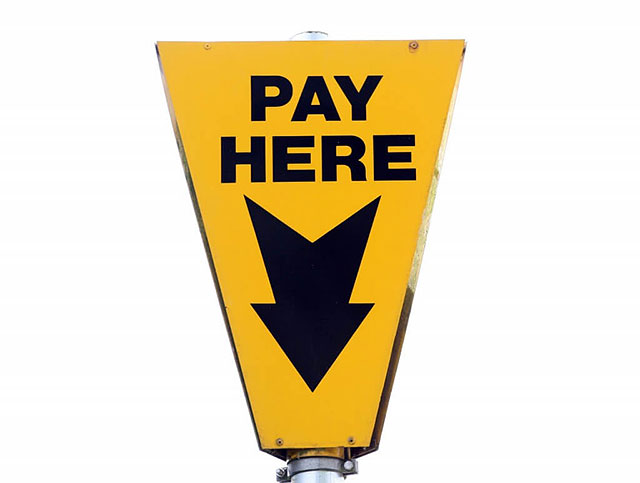Credit card fees are constantly changing. In order to judge them accurately, you need to know what the average credit card fees are and if they’re worth it. We gathered the news on common credit card fees right here so you can get the latest on fees all in one place.
U.S. News Consumer Credit Card Fee Study
This recent survey delved into the average annual fee, late fee, balance transfer fee, transaction fee, and APR for various credit cards in the United States.[1]
Annual fees
Only about 30% of credit cards charge an annual fee. The average annual fee is $110. The highest fees belonged to the travel and rewards cards, which charged an average of $93.17 and $41.38, respectively. Student cards boasted the lowest average annual fee at $0.
Late fees
Average late fees spanned a much smaller range than the annual fees. Secured cards had the lowest late fee at $34.39, while student cards made up for their lack of an annual fee with the highest late fee of $37.83. Late payments will also have a big negative impact on your credit scores, so be extra careful and make sure you pay at least your minimum payment every month.

Balance transfer fees
With a balance transfer card, you can consolidate all of your credit card debts into one account and make payments only on the balance transfer card. However, these cards usually charge you a fee depending on the amount of the credit card balance you transfer. This study found that the large majority of balance transfer cards – 72 percent – charge a 3 percent fee.
Cash advance fees
Credit card issuers charge cash advance fees when you use convenience checks or withdraw money from an ATM using your credit card. This isn’t one of the common credit card fees that you need to worry about too much, as long as you don’t take out cash with your card.
If you do end up using your card for cash advances, know that 54 percent of credit card issuers charge a fee between 2 and 4 percent. Nearly four in ten cards will charge a fee of 5 percent and a few (3%) charge 8 percent. Also, keep in mind that most experts advise against using a credit card for cash advances. Not only are there fees, but the APR for cash advances is also much higher than normal rates and apply immediately after a transaction is made.
APR
Unsurprisingly, the “Low APR” credit card category has the lowest minimum and maximum APR (12.06 percent and 19.34 percent, respectively). Secured cards have the highest minimum APR starting at 19.34 percent. Secured cards are followed by travel cards, which offer an average minimum APR of 16.95 percent.
According to this 2019 survey, student cards actually have the highest maximum APR. You may think your student card is a good deal because of the $0 average annual fee, but don’t be fooled. The maximum APR and late fees are highest for student credit cards.
Moral of the Survey
Look closely at these common credit card fees and average APR’s before you sign any agreements. They can get tricky depending on the type of card you can qualify for. Additionally, make sure you don’t overspend on rewards and travel cards. It’s tempting to try to game the system and rack up as many points as possible, but when it comes time to pay those fees and interest charges, the game won’t be so fun anymore.
January 2019: Higher Maximum Late Fees from the CFPB
At the start of this year, NerdWallet reported that the Consumer Financial Protection Bureau (CFPB) changed the maximum allowable late fee for credit card issuers. Previously, you could only be charged $27 for your first time being late and $38 for subsequent late payments. Now, both of these common credit card fees are a dollar higher each.
Instead of a maximum of $27 for your first late payment, you could pay $28. For late payments after that, you could pay $39 instead of $38. It seems small, and many credit card companies may not act on this increased maximum allowable fee yet. But be wary of your late payments in the future, as these charges can easily add up.
October 2016: Chase creates a viral card – with a $450 annual fee
Common wisdom says financial products that have high fees attached are best to be avoided. However, the Chase Sapphire Reserve credit card is breaking all standards by “going viral” – particularly amongst Millennials who, in the past, have seemed wary of using credit.

This new rewards credit card comes with some attractive features – 100,000 Ultimate Reward points to start, 3 points per dollar on travel and dining worldwide, a $300 annual travel rebate, Priority Pass Select access to 900 travel lounges worldwide and no foreign transaction fees. However, those benefits are offset by a whopping $450 annual fee.
Despite that hefty amount, Chase reports it received “tens of thousands” of applications within the first two days. They also report that the majority of those applications come from Millennials (age 18-34). However, some data analysis experts believe Millennials aren’t shy about credit cards – just credit card debt.
The idea is that Millennials are willing to use credit cards to cover everyday purchases in order to earn valuable rewards like the ones offered on the new Chase credit card. However, they know to be strategic and pay off the balances every month in order to avoid high-interest debt that can be problematic for your budget.
The trouble with fees that are as high as $450 is making sure your card usage is worth that price that you’ll have to pay each year.
“Unlike interest charges, annual fees apply no matter how responsibly you manage the debt,” explains Gary Herman, President of Consolidated Credit. “Such a high fee is only worth it if you use the card strategically and regularly enough to warrant the cost. However, that can make it even more challenging to keep the debt minimized.”
Basically, the idea is that reward credit cards are really only effective tools if you pay off the balances in-full every month. This minimizes interest so the rewards and cash back you earn are not offset by interest charges. Otherwise, if you are carrying a balance, you’re spending money to earn a smaller amount of money back.
With a high-fee credit card, you need to use it regularly to justify that fee. However, the more you use the card the less likely it is that you can pay off the balance in-full every billing cycle. As a result, you have to be extremely strategic about how you use this type of card so it doesn’t end up costing more than it earns.
“You should always weigh the value of a rewards credit card against the cost of use,” Herman encourages. “If you total up the fees and interest charges at the end of a year, as well as the total rewards earned, you want the cost to be well below what your earned. Otherwise, it’s just not worth it for your budget no matter how attractive the offer might seem.”
June 2016: NerdWallet finds Americans aren’t savvy about checking fees and reward programs.

Statistics show people rarely take time to familiarize themselves with a new product that they purchased before they start using it. That urge to pull a new toy out of the box and start playing with it is just too great to be bothered with something boring like a Use & Care Manual. That may explain why studies find that 95% of all gadgets returned actually worked in spite of what the user thought.
The scary truth is that credit users are no more likely to read a credit card agreement or even the initial contract closely, any more than tech users read the user manual for a new toy. That’s according to new online survey from the financial statistics experts at NerdWallet. The study finds people “either don’t understand credit card fees and rewards or don’t consider them when choosing a card.”
Not familiar with credit card fees
Roughly one third (30%) of survey respondents reported being confused by credit card fees. However, beyond basic confusion, there was also a tendency not to pay attention to fees. For example, 41% of respondents didn’t consider the cost of foreign transactions or cash advance fees with applying for a new card.
In fact, the only fee most cardholders usually bother to check is the annual fee. The survey found 87% of borrowers care about the annual fee when they apply for a new card, but less than half of those borrowers get past the annual fee to consider others. As NerdWallet shows, that can be a big deal in the bottom lines of cardholders.
Making rewards truly rewarding
Although 73% of survey respondents felt rewards were one of the most important factors when considering a new credit card, nearly one third say they don’t really fully understand how to earn rewards. Additionally, nearly one fifth couldn’t explain the dollar value of rewards earned.
This lack of understanding on how reward programs work mean borrowers may not be earning as much of a reward as they think they do when they make a purchase on a rewards credit card.
“Consider that average credit APR is over 19% but the cash-back value on most credit cards is capped at 5%,” explains Gary Herman, President of Consolidated Credit. “If you start a month with anything above a zero balance, then interest charges are applied during that billing cycle. So you earn 5% cash back, but finance charges of 19% mean that the debt costs more than the rewards you earn. It’s just not worth it.”
Additionally, Herman also notes people often squander airline miles in the same way. Flier miles usually have an average value of 1-2 cents. Most programs require you to use 25,000 miles, at minimum, to purchase a basic ticket. So it only makes sense to use miles to purchase tickets over $250-$500, depending on the value of your miles specifically. But if you’re using miles to pay for a $150 ticket, then you’re actually losing out.
Learn your rights as a consumer in the Credit CARD Act of 2009
In 2009, Congress passed the Credit Cardholders Bill of Rights, also known as the Credit Card Accountability, Responsibility, and Disclosure Act or CARD Act. It explains all the rights you have as a credit card user, including things related to fees.
Read more about the Credit CARD Act of 2009 to put the news about common credit card fees in context.
Sources:
